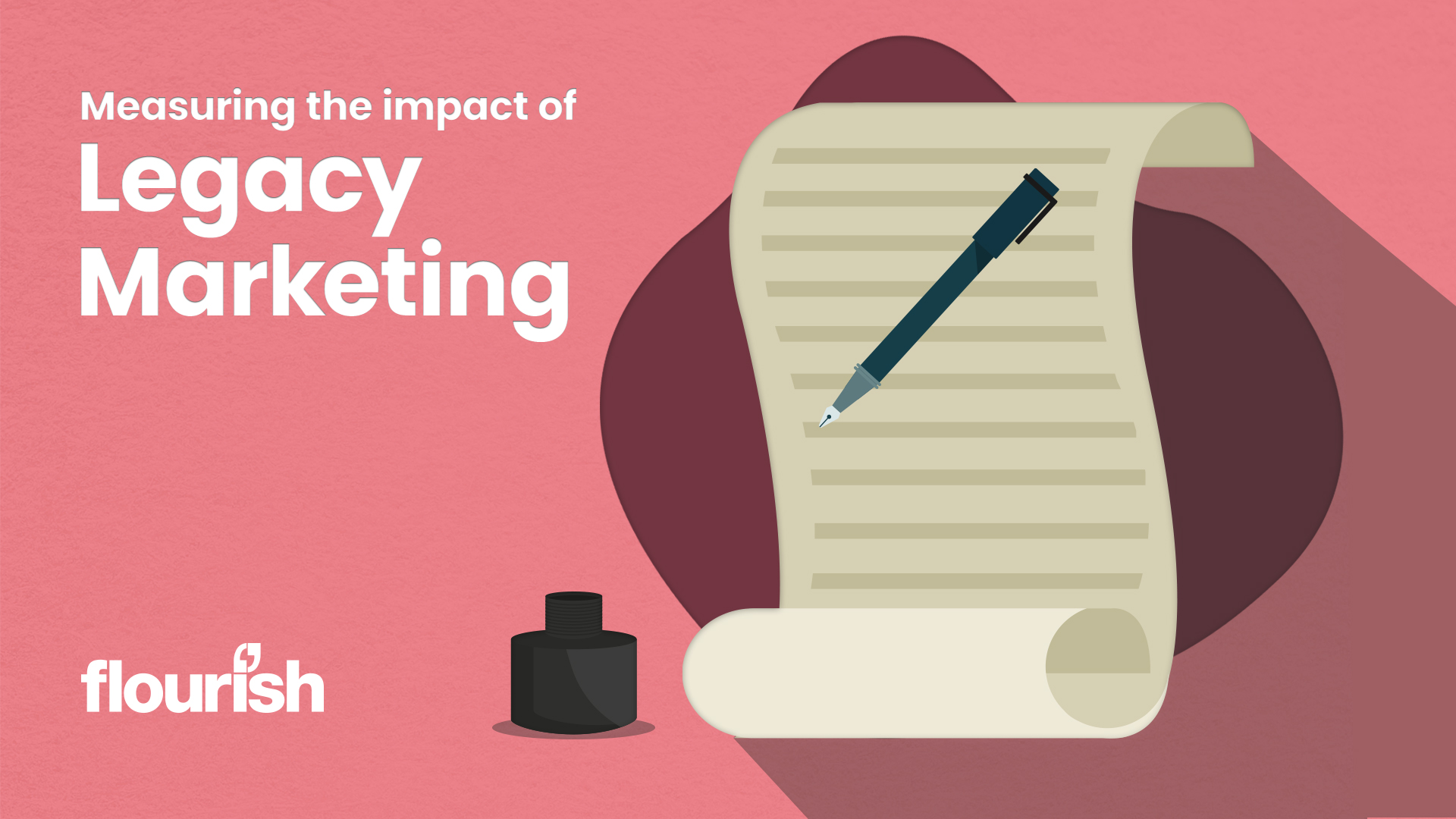Measuring the Impact of Legacy Marketing
by Keith Nichol, Joint Founder and Head of Strategy & Planning at Flourish
The perennial problem of measuring Legacy programmes is a combination of the typically low volume of responses we get from gift in Will activity, the reality that most Legacy income comes from people the organisation has never encountered before and, of course, the exceptionally long-term nature of the decision and giving processes.
Indeed, after what can be deemed a successful ‘conversion’, a charity cannot realistically expect the gift to arrive for 20 or even 30 years. And even then, there is no absolute guarantee that the money will be forthcoming.
All of this is something of an anathema to hard-working Fundraising or Individual Giving teams who tend work in the ‘here and now’ world of short-term response rates, donation values and the need to demonstrate an immediate ROI. Even with the higher level of payback you can expect from Legacy activity, investing in such a long-term ambition is inevitably less of a priority for charities who are seeking to grow income on an annual, quarterly, or even campaign-by-campaign basis.
So, to reinforce the case for Legacy fundraising and to justify its continued investment, a distinct approach to measurement is required.
Pipeline metrics
In the first place, establishing and measuring your Legacy pipeline will provide the organisation with perhaps its most fundamental view of gift in Will performance. Whilst there are variations, most legacy funnels consist of distinct stages – something like this:
- Awareness
- Consideration
- Intention
- Completion
Knowing how many people are at each stage of the pipeline (or funnel) and then tracking how they move or progress through it, begins to give you an idea of where you need to concentrate your efforts and your budgets. For example:
- Too few at the top of the pipeline? Invest your brand and awareness activity to increase the number of people who know you and are open to gifts in Wills.
- Too few in the middle? Improve the quality and quantity of your Nurture activity to increase the number of ‘Considerers’ or ‘Intenders’.
- Too few at bottom? Optimise your stewardship programme to improve the likelihood of receiving gifts from more ‘intenders’ or ‘pledgers’*.
Furthermore, by using your historic gift in Will data (in other words, the number of legators who actually go on to leave a gift and the average value of that gift) you can begin estimate the financial return of your Legacy programme. For example:
If you start with XXX number of people at top of the pipeline and they pass through each subsequent stage of the funnel at agreed percentages, by the time you reach the bottom, you will have X legators who will, on average, each leave a gift of £XXX. From this you can then calculate an annual income figure.
A word on Brand metrics
Channel metrics
Within the activity and campaigns you conduct at each stage of the funnel, you should be measuring how specific channels (Direct Mail, Email, Social Media, Website etc.) are performing in terms of their respective KPIs:
- Raising awareness (of the charity and / or their wider understanding of gifts in Wills)
- Increasing consideration (of the gift in Will opportunity, both in general and in relation to your specific cause / charity)
- Increasing intention (of leaving a Gift in Will to your charity)
Ultimately, it is the number of pledges or the number of actual bequests that a charity receives that is the most essential KPI. However, at this level, it’s practically impossible to track direct or attributed income from a specific channel or channels.
Experience metrics
Although an often-overlooked set of metrics, it’s also important to track key aspects of a donor’s relationship with your charity – primarily, their ‘experience’.
Whilst high value, lifelong supporters tend to have a greater propensity to leave a gift in their Will, a purely transactional view of an individual’s legacy potential is somewhat one dimensional.
By measuring supporter experience we can look to gain an additional layer of insight which, when combined with transactional data, can create a more nuanced view of prospective legators.
It’s important to remember that the impact of ‘experience’ on legacy income cannot usually be evidenced by behavioural or transactional data – not in the short term at least. We won’t really know if a ‘satisfied’ supporter goes on to leave a gift in their Will until the money is received from their estate. However, there is a well-established correlation between a supporter’s positive experience of a charity and the subsequent strength of their intention to leave a gift in Will to that charity.
There are a number of metrics of experience that can be considered:
- Their preference (for your cause / charity)
- Their understanding (of what you do)
- Their trust (in what you do)
- Their satisfaction (of how you operate as an organisation)
Although more sophisticated in nature and requiring of long-term commitment, these types of metrics are especially important for stewardship programmes. Using surveys, charities can keep tabs on a supporter’s experience and use the data to inform models relating to their probability of leaving a gift in their Will in the future.
If you’re in need of some support with your Legacy marketing programme, and would like to find out how you can receive a free Legacy comms review by our specialist team, get in touch.


